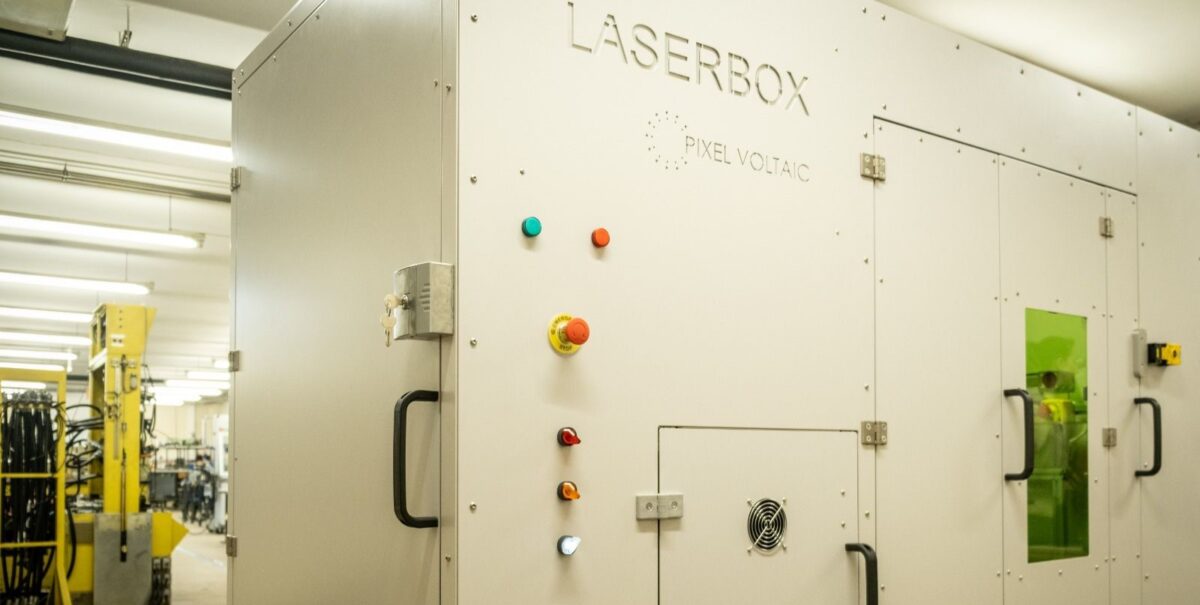Pixel Voltaic, a spinoff of Portugal's University of Porto, has developed a novel laser-assisted hermetic encapsulation technology that is suitable for sealing perovskite solar and dye-sensitized solar cell (DSSC) solo devices and panels with areas up to 30 cm x 30 cm.
“Through our novel process, we can hermetically seal all kinds of PV device form factors, circular or square-shaped, with our laser-assisted glass-to-glass or glass-to-metal encapsulation technology,” Pixel Voltaic CEO, Tiago Lagarteira, told pv magazine.
The company's first system is a batch process with a capacity to seal between 70 and 80 devices per day, according to Lagarteira. It is available for ordering directly from the company.
The company's technology roadmap is to increase capacity to accommodate larger device areas of up to 1 m2, and to modify the process to operate within a roll-to-roll line.
The most immediate business opportunity is to provide equipment to the growing number of indoor PV module manufacturers, as well as research institutes. “Perovskite and dye-sensitized solar technologies have great potential as battery extenders for Internet-of-Things devices offering more than 30 % of power conversion efficiency indoors,” said Lagarteira.
In addition, Pixel Voltaic offers sealing services to companies or groups that do not have their own equipment.
Popular content
The company's list of references includes the Centre for Hybrid and Organic Solar Energy (CHOSE) at the University of Rome Tor Vergata, the French DSSC company G-Lyte, perovskite specialist SOLRA-PV, a spinoff of the Hebrew University of Jerusalem.
The bonding is reportedly performed at temperatures between 65 C and 140 C, which makes it suitable for perovskite cells. The processing temperature is much lower compared to a typical thermo-compressive approach, which requires a temperature of 390 C, according to Lagarteira.
“It is a game-changer in stability for protecting sensitive PV materials. The glass frits bonding is superior to the alternative of thermoplastic and adhesive seals, which are not necessarily hermetic. The seal is compliant with the helium leak test defined in the military and aerospace electronic systems standard, known as MIL-STD-883H,” said Lagarteira. “The MIL-STD-883H standard defines encapsulation as hermetic when the helium leak rate is less than 5×10-8 atm cm3 s-1.”
Pixel Voltaic’s Laserbox system measures 2,000 mm x 1,000 mm x 2,000 mm with a 5,000 W power consumption. Its laser source is a continuous wave neodymium-doped yttrium aluminum garnet (CW Nd:YAG) with a power of 100 W. Optional is a controllable sealing atmospheric chamber, with either dry air, nitrogen, or argon. The unit's window box is removable and can be preheated. Its height can be adjusted via a built-in robotic system.
The system uses two cameras, specifically a high-resolution pan-tilt-zoom camera with optical zoom to record videos of the sealing process to control and monitor the infrared laser melting process, and a two-dimensional machine-vision camera. The latter is sourced from German electronics manufacturer SICK AG. It uses pattern recognition to automatically line up the laser beam.
This content is protected by copyright and may not be reused. If you want to cooperate with us and would like to reuse some of our content, please contact: editors@pv-magazine.com.


Uh, the 60-80 a day batch rate sounds excreble, but the seal quality and 100 W laser sound okay…just get rid of the seemingly useless 5 KW that’s beside the point and use that 2 m x 1 m area to knock out 60-80 m^2 an hour…